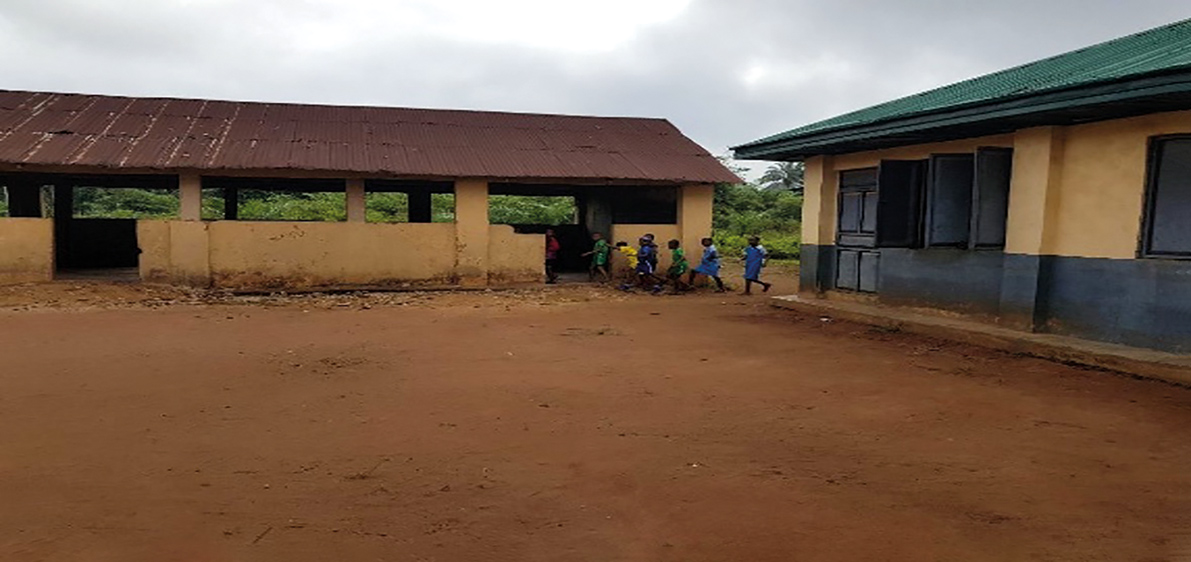
Building occupants in tropical regions often struggle to deal with overheated indoor spaces. While some opt for air conditioning (AC) to cope with heat stress, its high cost, maintenance requirements, and environmental impact make it impractical for many people, particularly in areas with unreliable electricity supply.
In Nigeria, air conditioning is also hampered by the frequency of irregular electricity supply from the nation’s power distribution companies. Consequently, the thermal comfort of building occupants relies on natural ventilation, with operable windows serving as the primary means of airflow.
The thermal comfort of a building’s occupants relies more on cross-ventilation; the infiltration of air through natural means depends on other environmental factors (air temperature, relative humidity), and personal factors (clothing) and metabolic rate, for occupants to be thermally comfortable.
Exposing children to high temperatures may affect their learning and problem-solving abilities
As well as these environmental factors, the thermal comfort of young children, who spend a significant portion of their day in classrooms, also depends on personal factors such as clothing and metabolic rate.
It is often pointed out in thermal comfort literature that the lack of knowledge about the thermal perception of children may put their health at risk. Dr Charles Munonye, of Chukwuemeka Odumegwu Ojukwu University, went some way to addressing this shortfall with his study Evaluating the perception of thermal environment in naturally ventilated schools in a warm and humid climate in Nigeria, which was awarded the CIBSE Carter Bronze Medal for application and development.
Exposing children to high temperatures may also affect their learning and problem-solving abilities – so the importance of determining their comfort temperature cannot be overemphasised.
Collecting the data

Imo State was selected as the study location because it is known for its warm and humid climate. Three public primary schools, representing diverse socio-economic backgrounds, were randomly chosen for data collection. The classrooms used in the study fell into two categories: three ‘open-space’ and three ‘enclosed-plan’.
The substructure of the six selected classrooms comprises mass concrete strip foundations, and a mass concrete floor finished with cement screed. Each has the same roofing material: galvanised steel resting on timber supports with PVC materials for ceilings.
A combination of subjective and objective data-collection methods was employed. A total of 330 children, aged between 7 and 12 years, were surveyed morning and afternoon, using questionnaires to assess their comfort perception. More than 7,000 questionnaires were collected, while simultaneously measuring indoor and outdoor temperatures.
It’s important to mention that primary schoolchildren of both sexes in public schools in Nigeria wear similar government-approved uniforms. The clothing value was approximated to 0.38 clo and categorised as light summer clothing, as set out in ASHRAE Standard 55-20171 Thermal environmental conditions for human occupancy. The children’s metabolic rate was estimated at 1.2 One metabolic equivalent (MET).
Before the survey began, temperature readings were taken with data loggers at different heights and positions in the classrooms. All were found to be the same during a particular period that the measurements were taken. The uniformity of readings may be because there was no direct impact of solar radiation on the walls, as these are shaded by trees on the eastern and western sides of the buildings.
The questionnaires were designed to align with the seven-point ASHRAE thermal sensation scale (see Table 1), enabling the children to express their thermal comfort level accurately. Measurements of the environmental parameters using data loggers included air temperature, humidity and airspeed.
Regression analysis was conducted to examine the relationship between the mean thermal sensation votes and indoor operative temperature. Data was analysed using social science (SPSS) software.

Revealing results
Minimum, maximum and mean values of indoor operative temperatures and relative humidity were recorded in the two types of classroom. Results showed that the indoor temperature in the studied classrooms ranged from 22.5°C to 35.6°C, with a mean indoor temperature of 29.1°C.
The average indoor air velocity was 0.19m/s, and the mean indoor relative humidity was 71.2%. The comfort range for the surveyed classrooms was determined to be between 25.2°C and 32.3°C, based on the linear regression analysis of the mean thermal sensation votes and mean indoor operative temperatures.
The study had several key findings. Notable differences are demonstrated in thermal performance and occupant acceptability between the ‘open-space’ classrooms and ‘enclosed-plan’ classrooms. These results emphasise the influence of building characteristics on thermal perceptions and occupant acceptability.
The neutral temperatures obtained in this study – 28.8°C for the ‘open-space’ classrooms and 28.1°C for the ‘enclosed-plan’ classrooms – indicate a significant difference in the thermal conditions between the two types of classroom. These averages align with some previous studies conducted in primary schools in tropical climates.2,3
However, some neutral temperatures produced by other field works conducted in Nigeria differ from those produced in this study. For example, Ogbonna & Harris produced a lower neutral temperature in a study conducted in Jos, Nigeria.4
The reason for the significant difference is obvious: the work
was conducted in a location where the temperature is, for the whole year, cooler than the study area of this work. While temperatures in Jos fluctuate between 21°C and 30°C, those in Imo State are usually within the range of 28°C-30°C. Adunola & Ajibola conducted a study in Ibadan and produced a much higher neutral temperature of 32.3°C compared with another study.5 The big difference may be because the survey was conducted in April, a month usually associated with a dry spell.
The combined ‘open-space’ classrooms in Imo State exhibited a lower mean indoor operative temperature, indicating that the occupants perceived their environment as relatively cooler compared with the combined ‘enclosed-plan’ classrooms. This finding was further supported by the thermal sensation votes, where children in the ‘open-space’ classrooms reported a lower mean value (+0.09) than those in the ‘enclosed-plan’ classrooms (+0.29). These results suggest that the architectural characteristics of the classrooms influenced the children’s thermal perception.
For the combined ‘open-space’ classrooms in both seasons, it will take up to a 4.2°C change in indoor operative temperature for the pupils to experience one unit change in their thermal state. For the combined ‘enclosed-plan’ classrooms in both seasons, it will take only 2.8°C. This indicates better adaptation in the ‘open-space’ classrooms.
The regression analysis revealed that the children’s sensitivity to temperature changes was relatively low, with a higher regression gradient observed in the ‘enclosed-plan’ classrooms. This finding supports the notion that children are generally less sensitive to temperature variations compared with adults, with children exhibiting a higher tolerance for elevated temperatures.
Moreover, the comfort ranges reported in the study exceed the values recommended in ASHRAE standard 55, indicating a higher tolerance of thermal conditions among the studied sample.
It also shows that, by relying on natural ventilation and cross-breezes, these schools can avoid unnecessary energy consumption and carbon emissions.
The study highlights the importance of appropriate design strategies and sustainable building materials in providing thermally comfortable indoor environments, and has the potential to reverse the current trend for installing air conditioning systems in classroom buildings in Nigeria.
References:
ASHRAE Standard 55-2017 Thermal environmental conditions for human occupancy
Adaji, M., Watkins, R., & Adler, G. (2017). Indoor thermal comfort of residential buildings in the hot-humid climate of Nigeria during the dry season. PLEA
Efeoma, M. O. (2017). Influence of clothing on adaptive thermal comfort: a study of the thermal comfort of office workers in hot-humid conditions in Enugu, Nigeria.
Ogbonna, A. C., & Harris, D. J. (2008). Thermal comfort in sub-Saharan Africa: field study report in Jos-Nigeria. Applied Energy, 85(1), 1–11.
Adunola, A. O., & Ajibola, K. (2016). Factors significant to thermal comfort within residential neighborhoods of Ibadan metropolis and preferences in adult residents’ use of spaces. SAGE Open, 6(1), 2158244015624949.
